Few kitchen zones invite both creativity and chaos like the humble fridge. When shelves overflow and yesterday’s produce hides behind take-out boxes, families waste an average 25 percent of the perishables they buy, largely because items get lost or spoil before anyone sees them. Smart organization not only cuts that cost; it streamlines meal prep, reduces energy use, and even inspires healthier snacking when fresh foods appear front and center. The twenty ideas that follow translate professional organizer tricks, tested storage products, and zero-waste research into simple steps you can start today. Explore each tip, pick the ones that fit your space, and enjoy opening a fridge that finally works for you instead of against you.
1. Clear Modular Bins Keep Fridge Zones Obvious
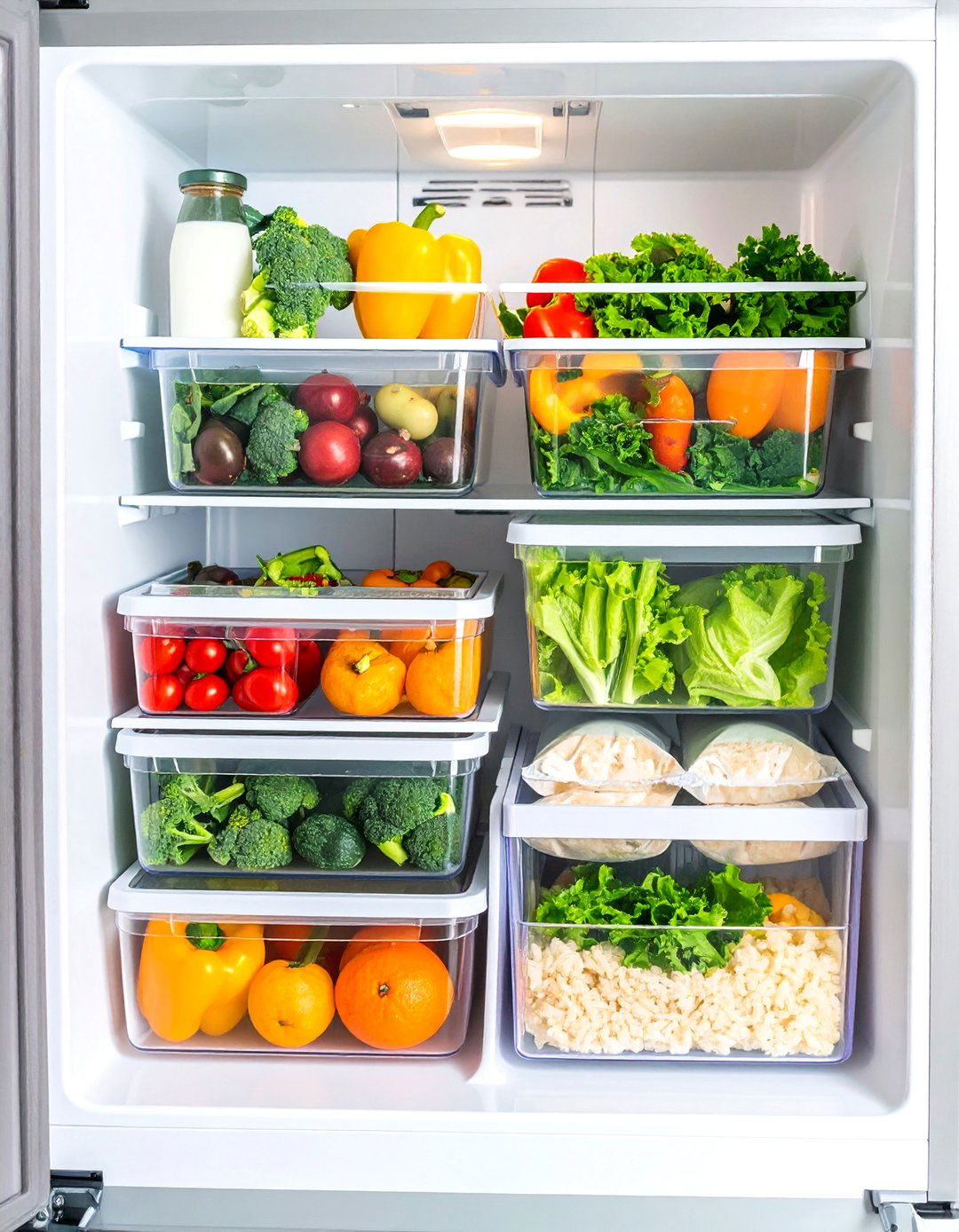
A crisp sense of visibility starts with swapping random grocery bags for transparent, stackable bins that create instant categories inside the fridge. By grouping produce, deli packets, and grab-and-go breakfasts into clear containers, you turn visual clutter into tidy blocks that slide out like drawers, letting you see exactly what needs eating before it expires. Organizing pros emphasize that see-through walls curb the common “out of sight, out of mind” habit that fuels food waste. Choose modular sets that share a footprint so they nest or stack securely, and label the fronts for effortless restocking after each weekly shop again.
2. Designate a Fridge “Use-First” Bin to Slash Waste
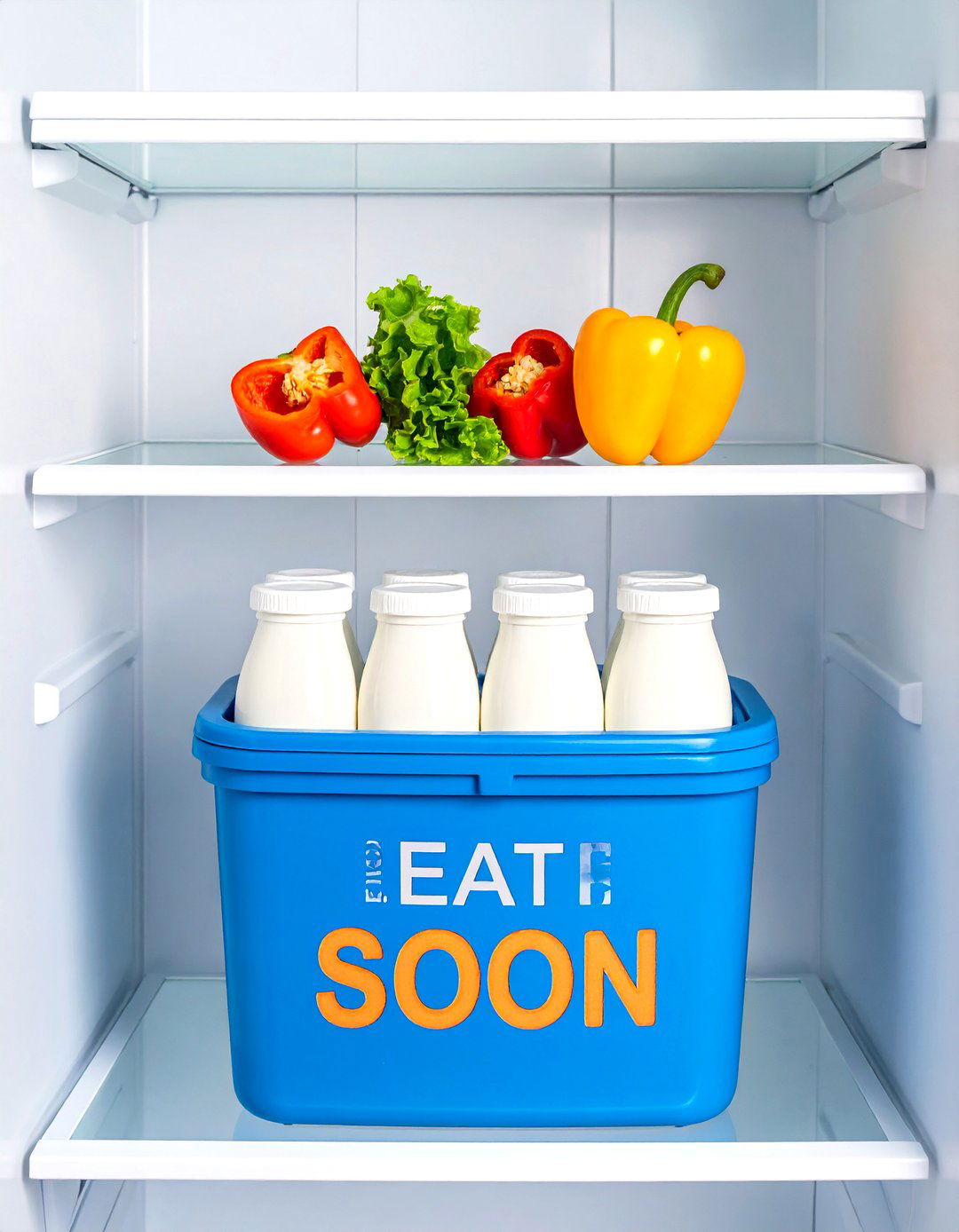
Consider carving out a bright “use-first” bin on your fridge’s middle shelf so everyone instantly knows what must go before anything new gets opened. Sliding older yogurt cups, half peppers, or yesterday’s take-out into this spotlight means they won’t languish unseen behind fresher arrivals. Zero-waste advocates highlight that clearly marked rescue zones can cut household food loss by up to a third because decision-making is simplified at snack time. Pick a color that contrasts with your other bins, add a bold label like “Eat Me Soon,” and train the family to check it before they reach for something else first.
3. Use Natural Fridge Temperature Zones for Safer Storage
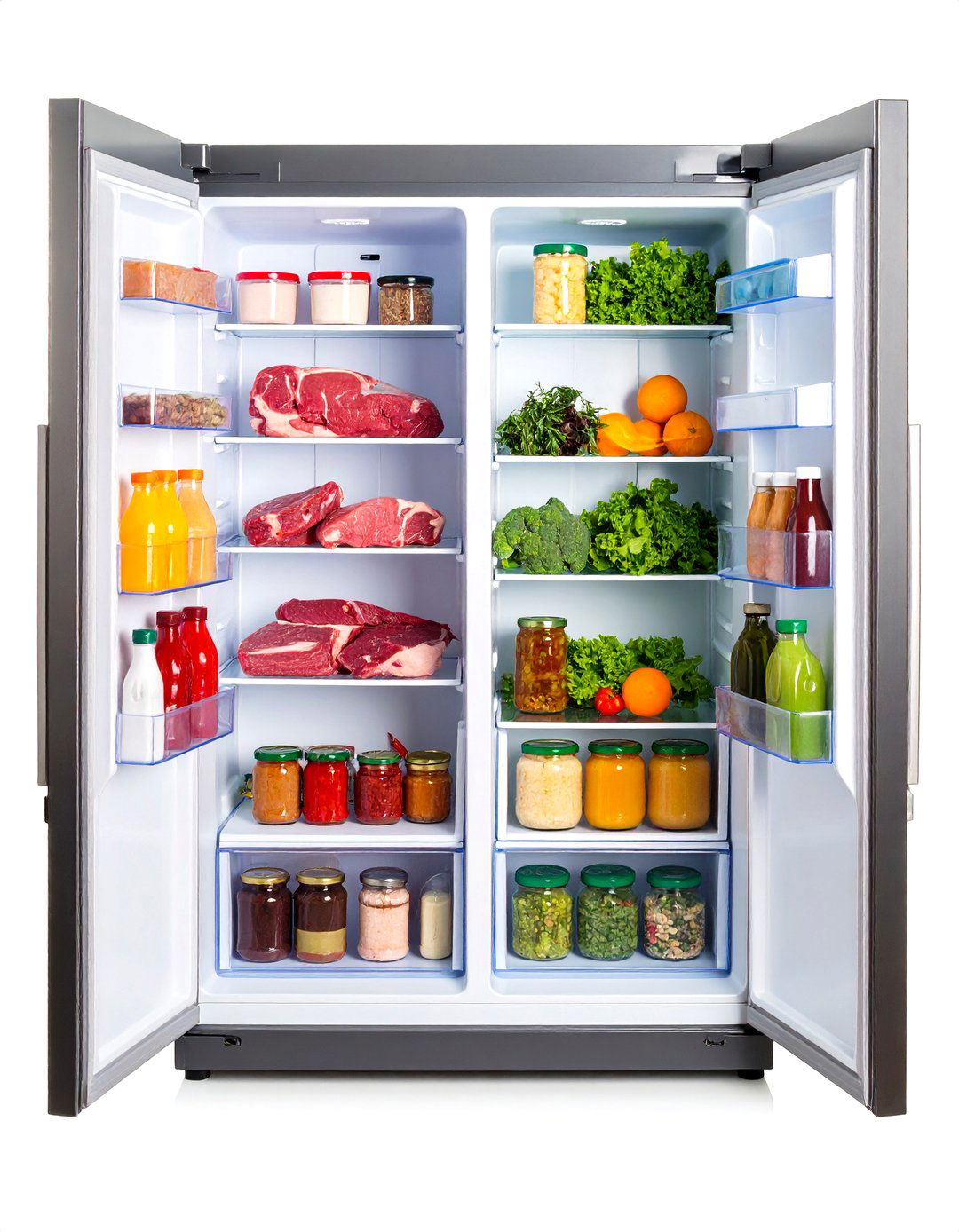
Owing to simple physics, different parts of the fridge run slightly warmer or colder, and learning those micro-climates prevents spoiled milk and soggy greens. The door, regularly hit by room air, is best for condiments and juice, while the back of the bottom shelf stays coldest for raw meat or dairy. Map these zones on sticky labels, then place a clip-on thermometer to confirm that every shelf remains under 4 °C. When food lives where science intends, flavor lasts longer, energy use drops because the motor cycles less, and you’ll stop worrying whether that chicken is still safe by dinner.
4. Install Stackable Drawer Inserts for Extra Fridge Real Estate
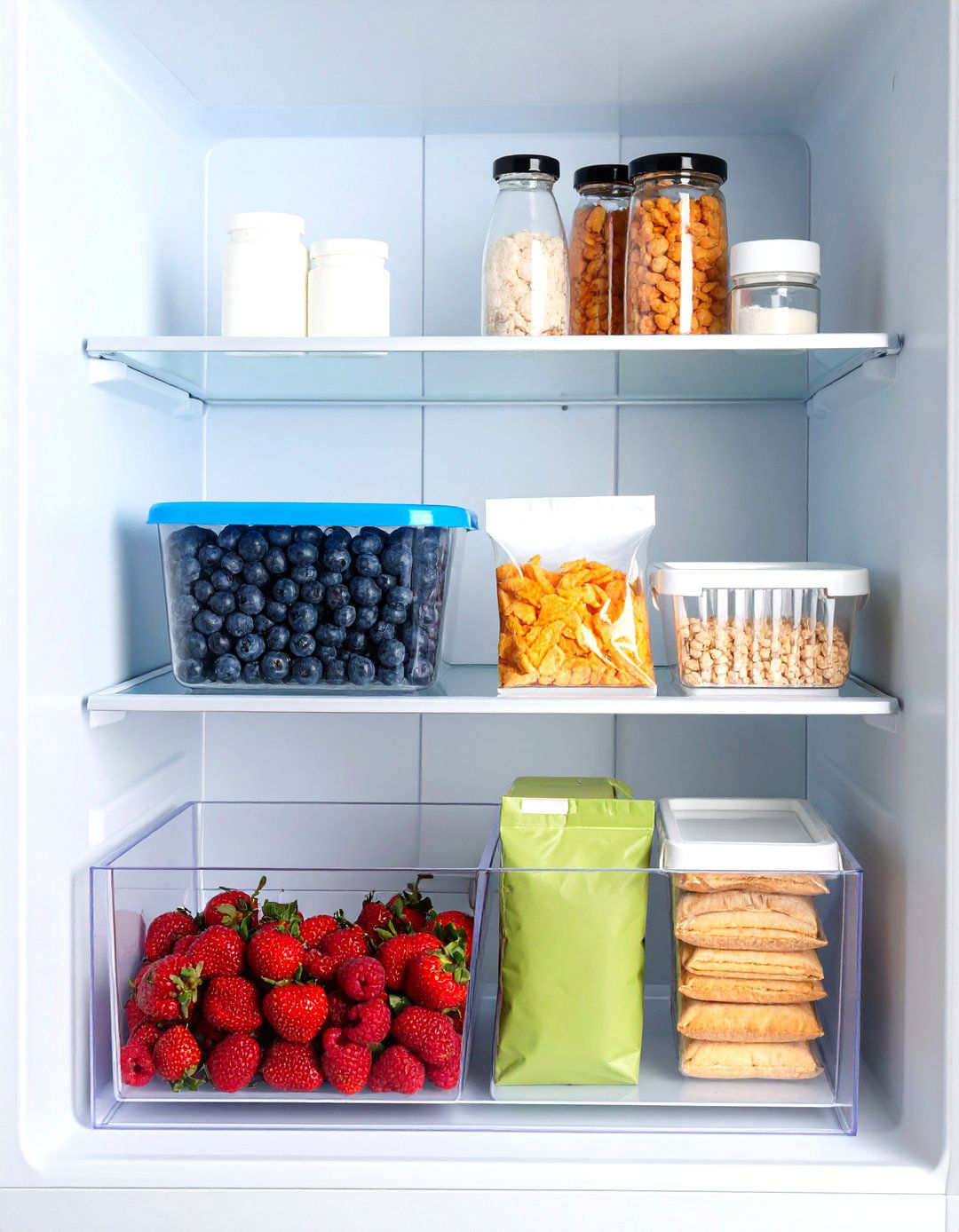
Surprisingly, vertical headspace often sits empty above shorter jars, so sliding in a clear, stackable drawer insert doubles usable real estate without tools. These acrylic units perch on sturdy feet, creating a glide-out tray where berries or snack packs stay protected instead of being piled. Testing from kitchen-storage reviewers shows that adding even one extra drawer can raise effective fridge capacity by 15 percent and reduce item stacking that leads to leaks. Measure the gap under your highest shelf, select an insert that still permits airflow, and enjoy lifting the entire drawer out for a quick wipe-down every week or two.
5. Add a Lazy Susan to Spin Out Hidden Fridge Sauces
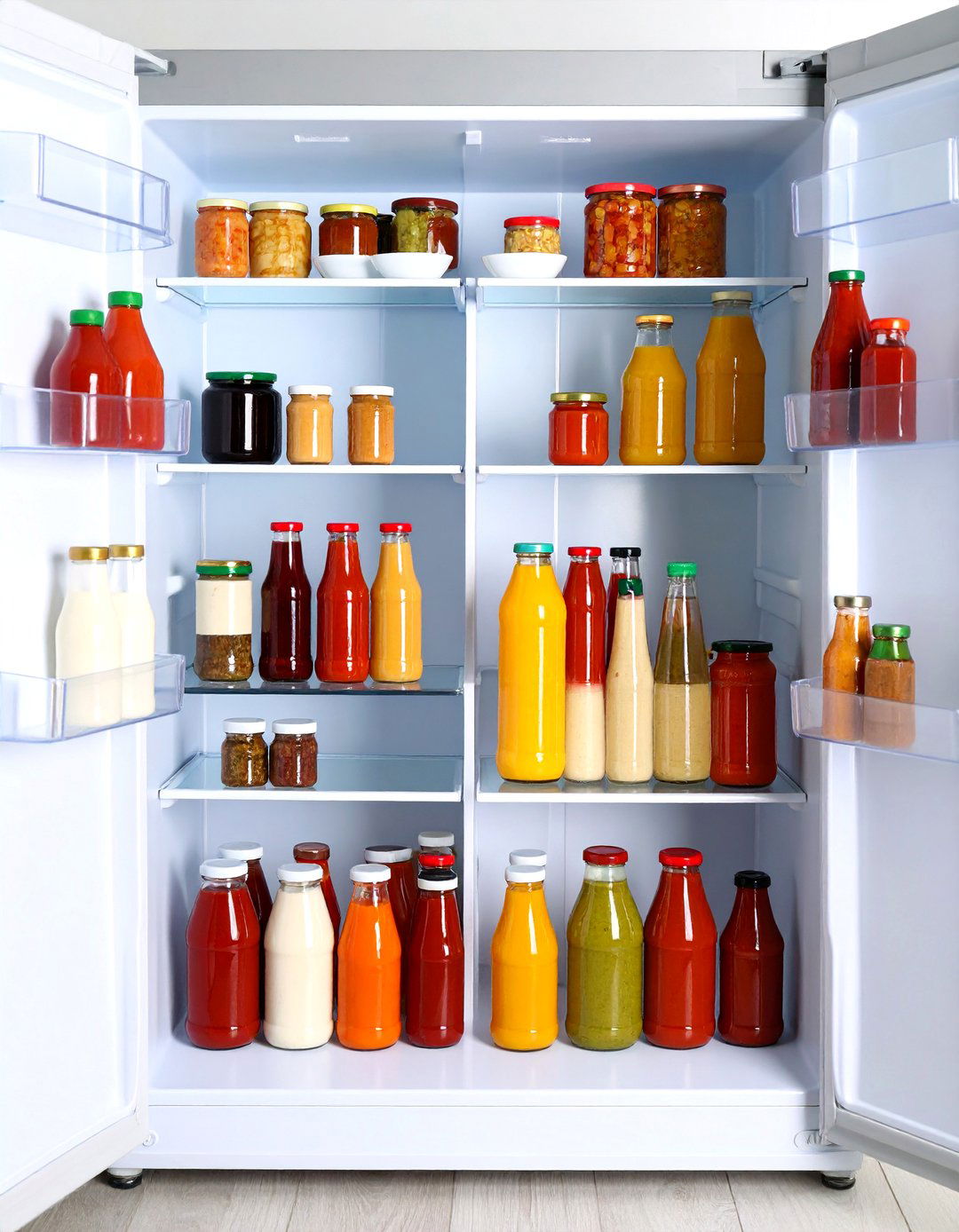
Looking for a way to end the archaeological dig through hot-sauce bottles? Place a small, non-skid Lazy Susan on the deepest shelf so jars spin forward with a finger flick. This rotating platform keeps condiments visible from every angle, and organizers on recent kitchen makeover videos note it cuts retrieval time in half because nothing hides behind taller items. Choose a model with a raised edge to prevent rogue jars rolling when the fridge door slams, and wipe the disc clean in seconds if something drips. One effortless twist, and you’ll always know whether you still have salsa left there.
6. Repurpose a Magazine Holder for Upright Fridge Deli Packs
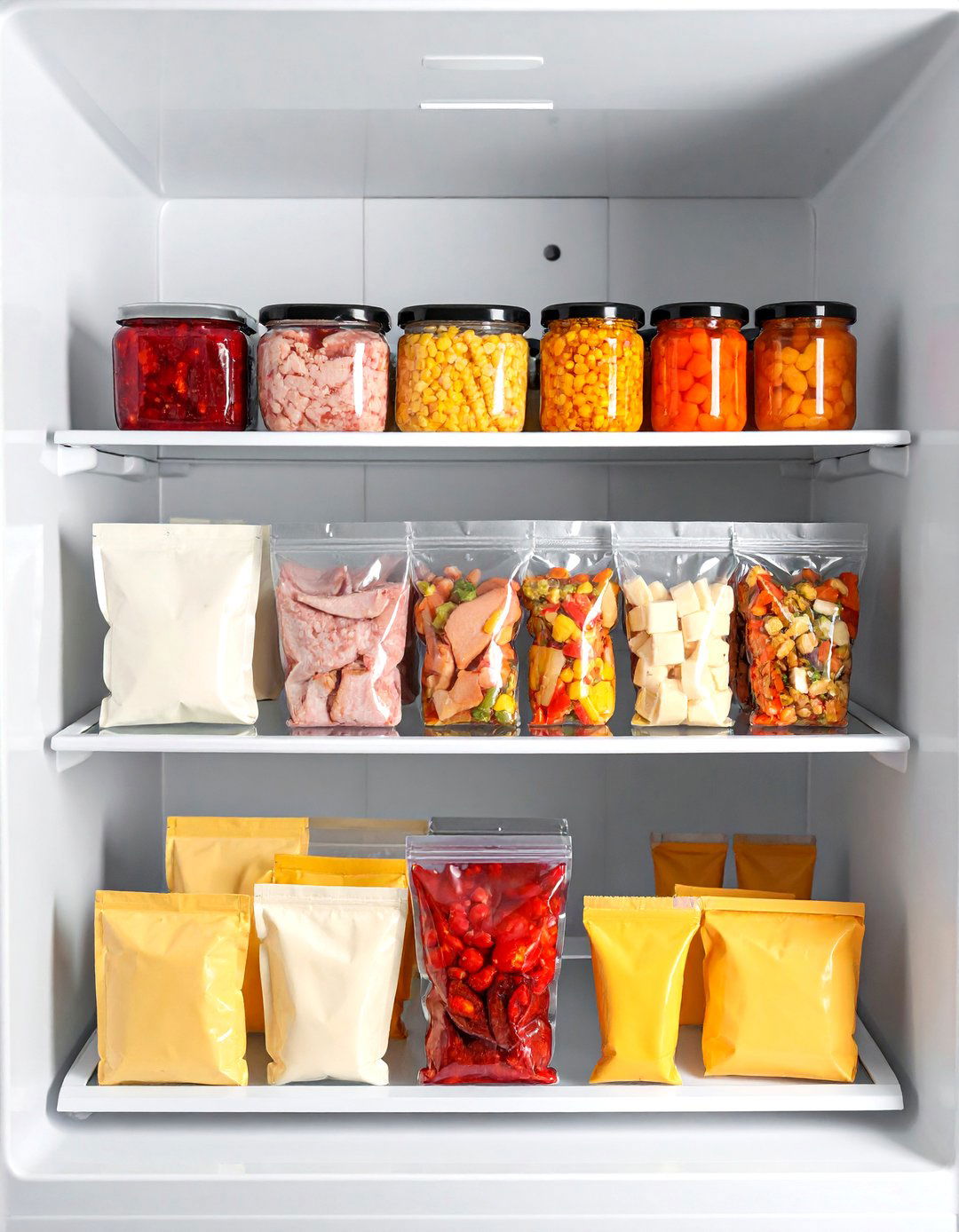
A sleek office magazine holder turns into a vertical deli drawer the moment you slide it onto a lower fridge shelf. Standing lunch-meat pouches or shredded-cheese bags upright keeps them flat, prevents leaks, and frees horizontal space for leftovers. DIY posts shared across current organization boards show that slim holders fit perfectly in the gap beside crisper drawers and cost pennies compared with specialty bins. Pick a ventilated plastic style so cold air still circulates, label the spine, and pull the entire holder out when making sandwiches — no more rummaging under salad tubs for turkey slices at lunchtime again.
7. Install a Can Dispenser Rail for Effortless Fridge Drinks

Unlike clunky cardboard soda boxes, a dedicated can-dispenser rail lets chilled beverages roll forward automatically whenever someone grabs the front can, keeping the row tidy without two-hand juggling. Product testers evaluating fridge organizers found that rails reduce the footprint of a twelve-pack by a third and eliminate the domino effect that scatters cans across shelves. Position the dispenser near the door hinge for quick access, rinse it weekly, and reclaim plenty of space for produce. The smooth gravity feed works equally well for sparkling water, mini juice cans, or chilled cold-brew — no reorganizing after each drink run again ever.
8. Hang Reusable Silicone Bags Under a Fridge Shelf
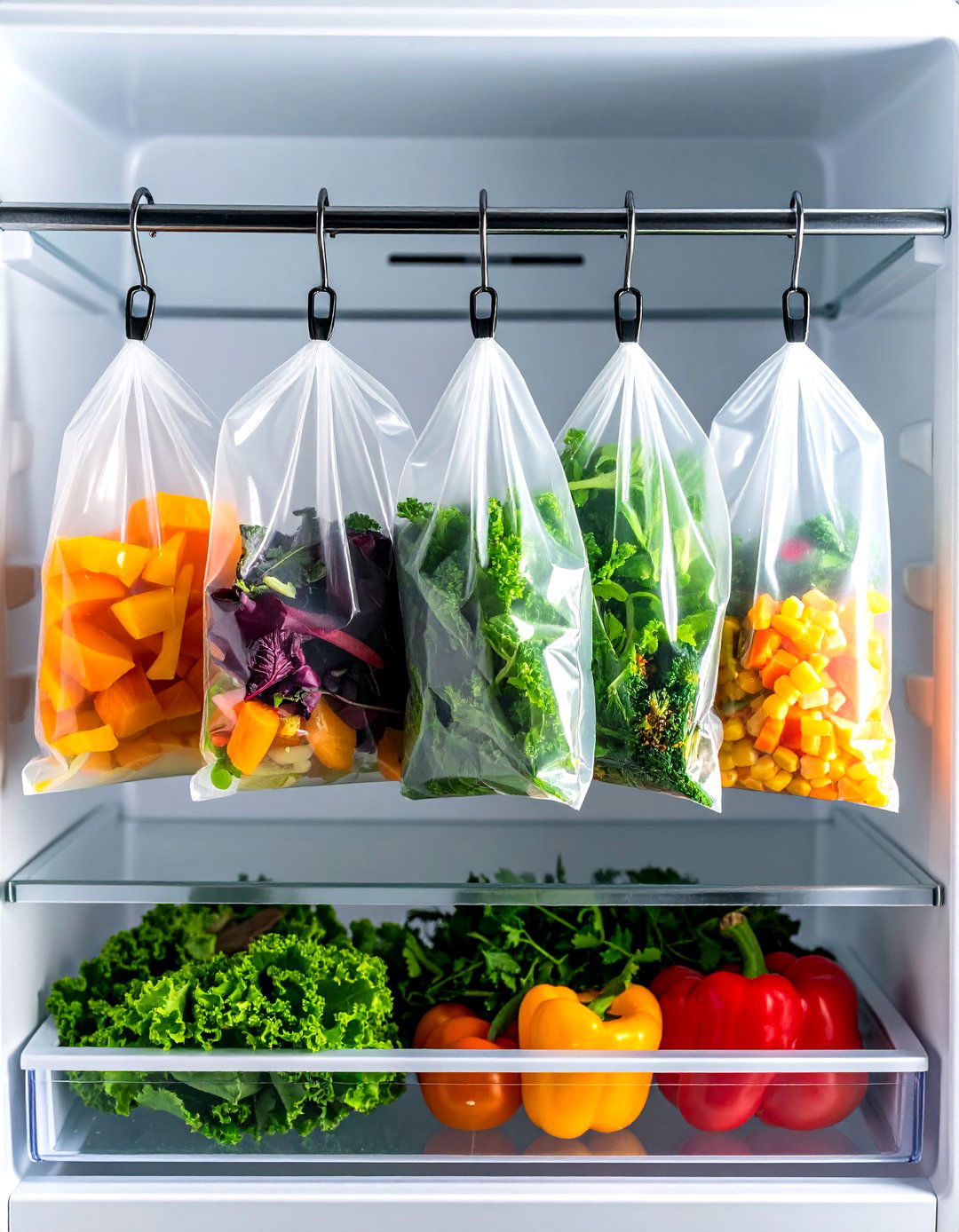
By clipping food-safe silicone bags to adhesive hooks on the underside of a glass shelf, you unlock an aerial layer perfect for herbs, cheese sticks, or pre-cut veggies. These flexible pouches seal flat, yet dangle where air can circulate on both sides, resisting the slimy buildup that plagues plastic produce bags. Many sustainability reviewers praise the switch to silicone for eliminating dozens of single-use zipper bags each month. Measure clearance so the bags don’t brush containers below, label them with dry-erase markers, and peel the hooks off easily when cleaning day arrives — storage that literally floats in midair today.
9. Label and Date Everything in the Fridge to Curb Guesswork

Studies on home-kitchen habits show that clearly printed labels reduce time spent hunting for leftovers and slash the number of questionable containers people toss by mistake. Keep a roll of freezer tape and a fine-tip marker in a magnetic cup right inside the fridge door; whenever you stash a container, jot the contents and date in bold. Standardizing this simple step means nobody wonders whether that sauce is from Friday or two weeks ago, and Sunday meal-prep feels orderly when identical fonts greet you. Replace smudged labels immediately, and save your future self from the dreaded sniff test later on.
10. Color-Code Fridge Meal-Prep Containers for Quick Choices
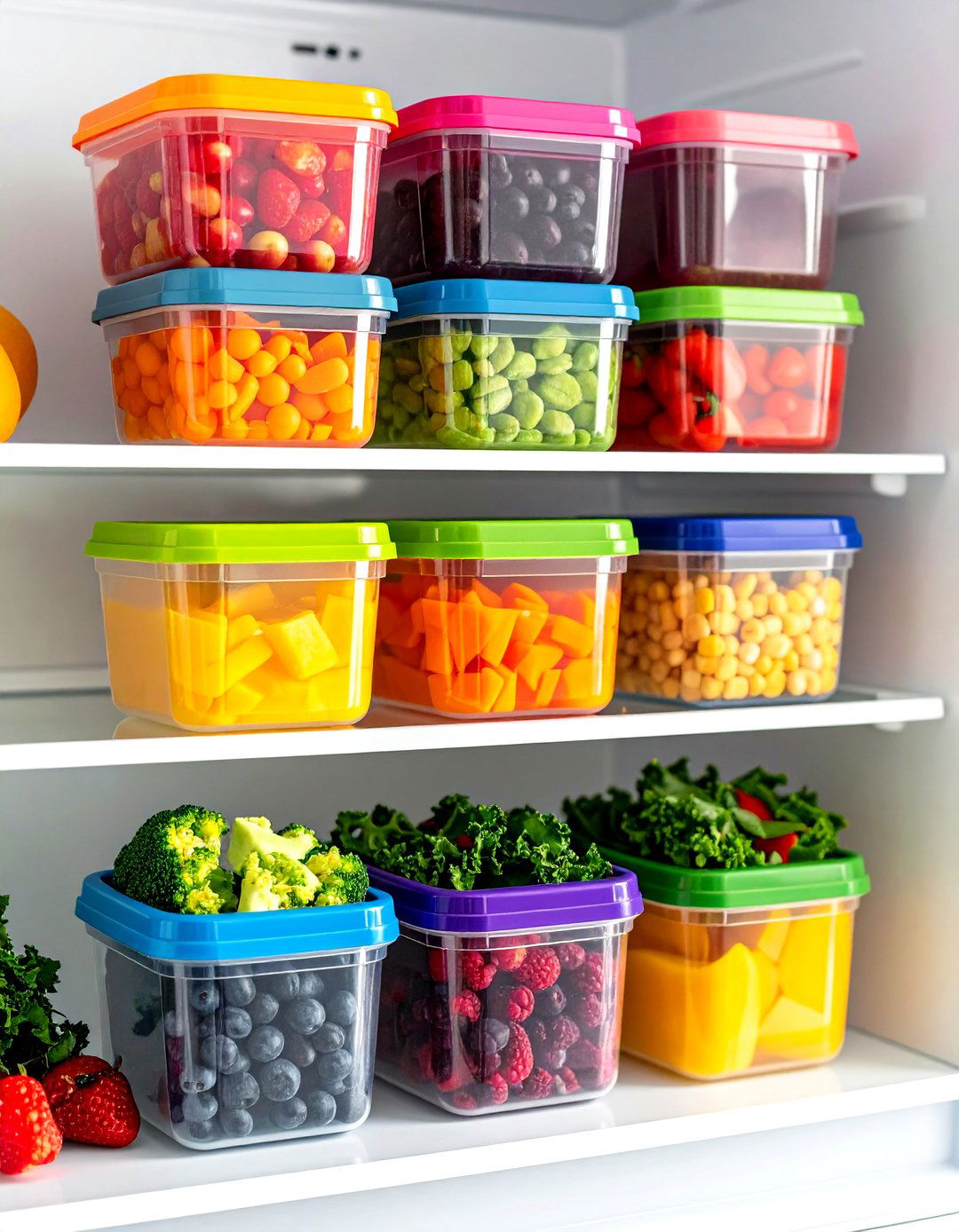
Bright visuals beat brain fog, so assigning distinct lid colors to breakfast, lunch, and dinner portions means the right meal pops out without opening every box. Organisation boards trending this year show rainbow-hued container sets lined up by day, helping busy parents grab the correct dish in seconds. Stick to one brand so bases are interchangeable, keep a chart on the door explaining the system for guests, and replace lids immediately after washing to avoid missing pieces. Because the colored tops sit flat, you can stack three high while still seeing the shade — saving space and mental energy daily.
11. Create an Eye-Level Fridge Snack Station for Kids
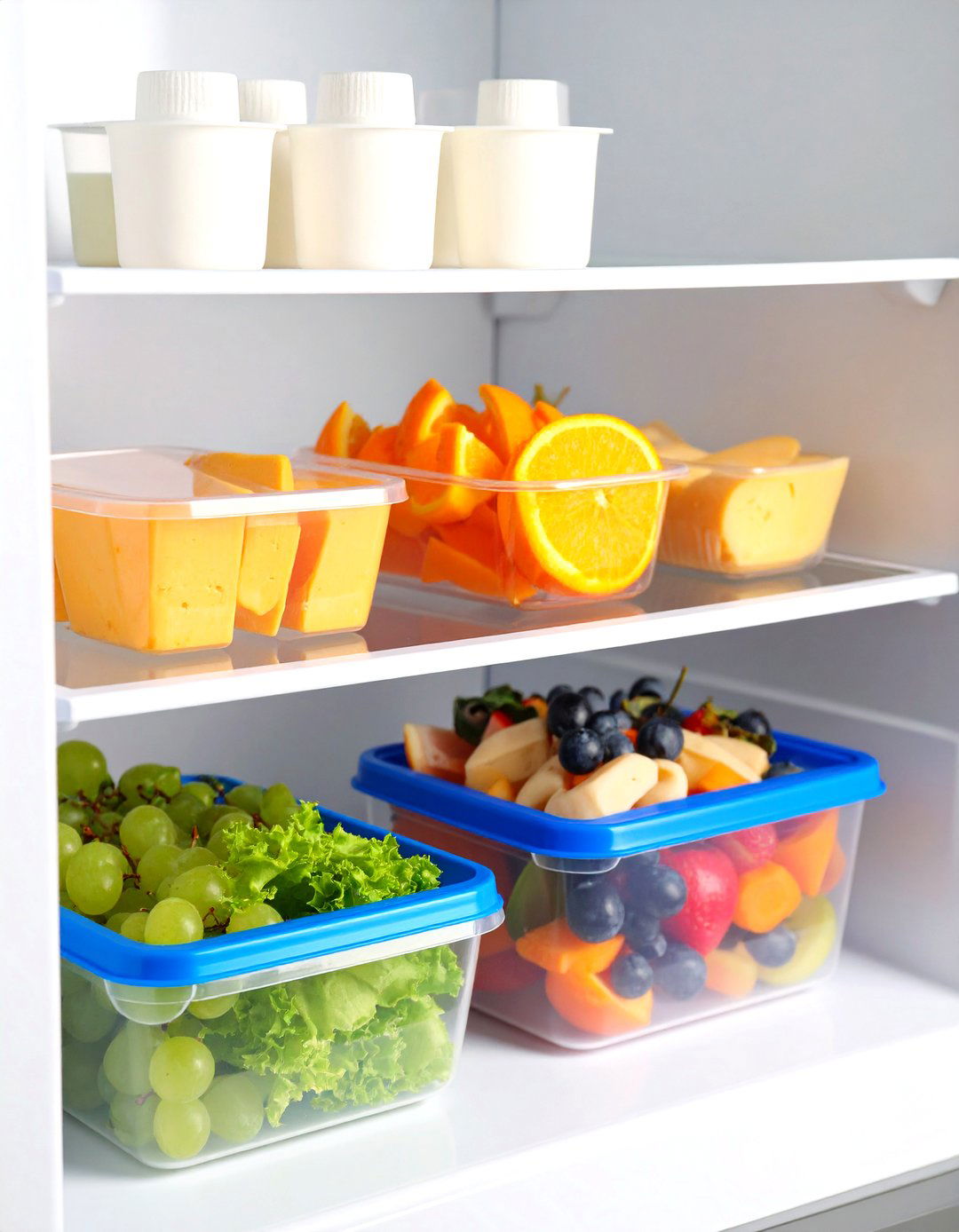
With little ones, accessibility matters more than perfection, so dedicating the eye-level shelf to pre-portioned fruit cups, cheese slices, and yogurt tubes lets children serve themselves safely. Family-focused declutter videos demonstrate that when healthy snacks sit front and center, kids choose them 50 percent more often than sugary treats stored deeper in the fridge. Use shallow bins labelled with names or fun icons, and keep heavier glass jars elsewhere to avoid accidental drops. Reset the station every Sunday night so fresh options greet hungry explorers after school, transforming the fridge into an empowering nutrition hub rather than a forbidden zone altogether.
12. Stick a Magnetic Inventory Board on the Fridge Door
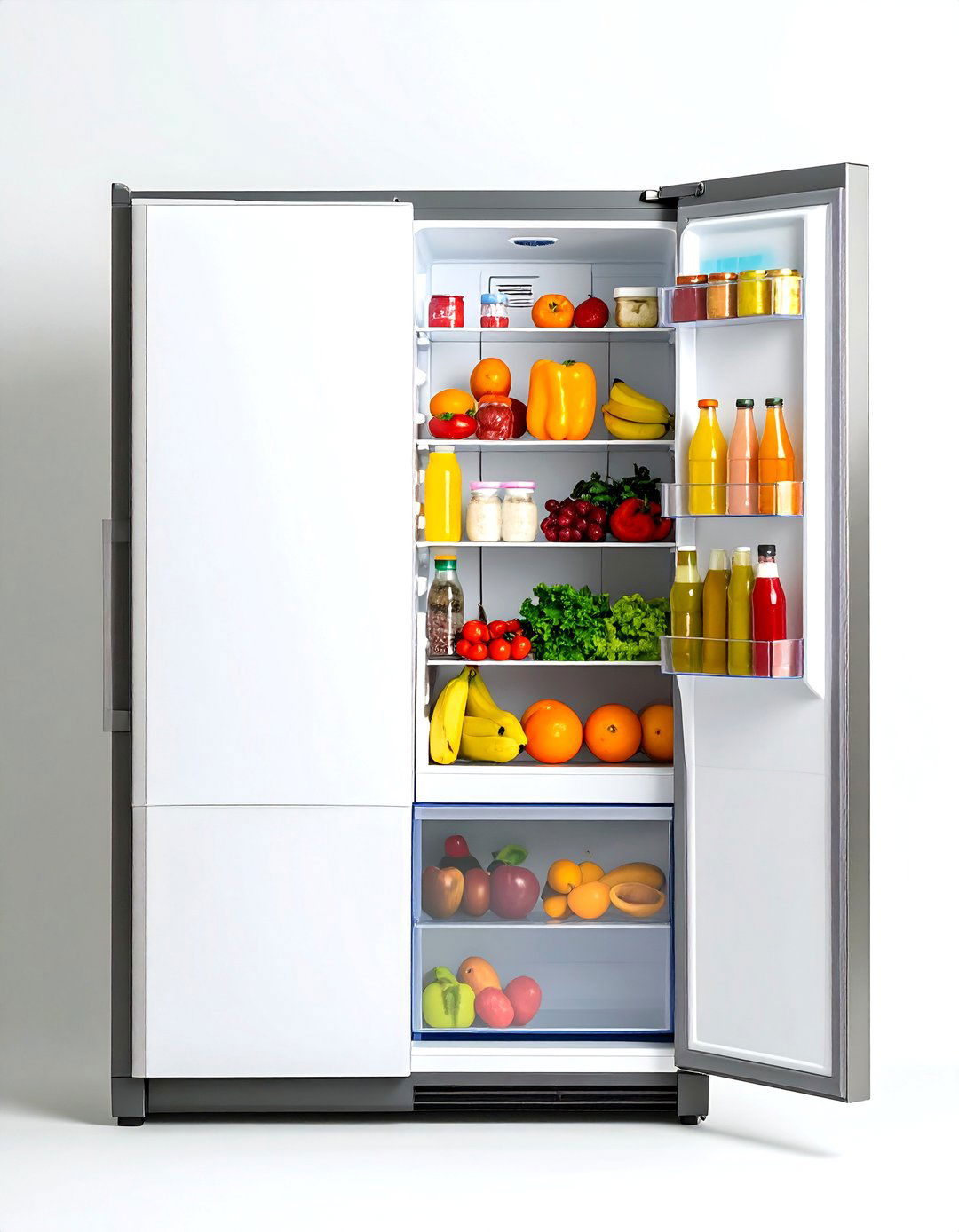
To wrap things up after each grocery run, jot incoming items on a slim magnetic whiteboard attached to the fridge’s exterior; erase lines as foods disappear. Minimalist zero-waste creators reveal this habit slashes duplicate purchases and prompts timely menu ideas because you glance at the list while grabbing milk. Use two columns — one for perishables, one for staples — and star anything nearing its “eat-first” deadline. The quick visual may seem old-school compared with apps, yet everyone in the household can update it without unlocking a phone, keeping accountability within arm’s reach of the crisper drawer each day too easily.
13. Line Fridge Shelves with Easy-Clean Mats
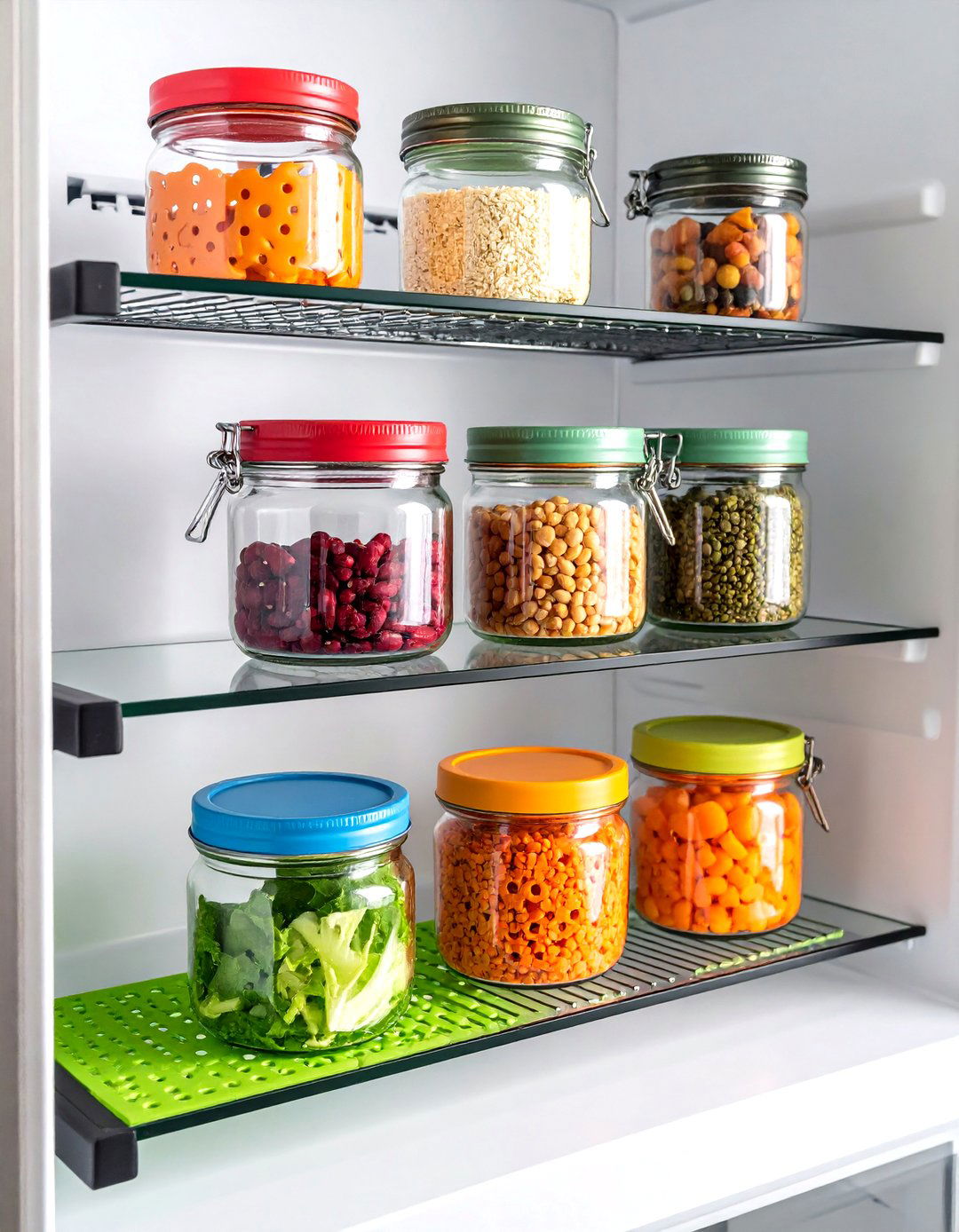
An aromatic spill from leftover curry no longer stains when perforated fridge mats shield glass shelves. The thin, grippy sheets lift out for a soapy rinse, so you spend minutes, not hours, scrubbing sticky rings. Product testers reviewing top refrigerator accessories say washable liners extend shelf life of produce by allowing airflow beneath items, preventing condensation sogginess. Choose BPA-free material, trim to size with scissors, and color-code sections to match food groups if you like a visual map. Bonus: fragile jars won’t clink as harshly against the padded surface when kids swing the door open especially during busy mornings ahead.
14. Protect Eggs with a Slide-Out Fridge Drawer
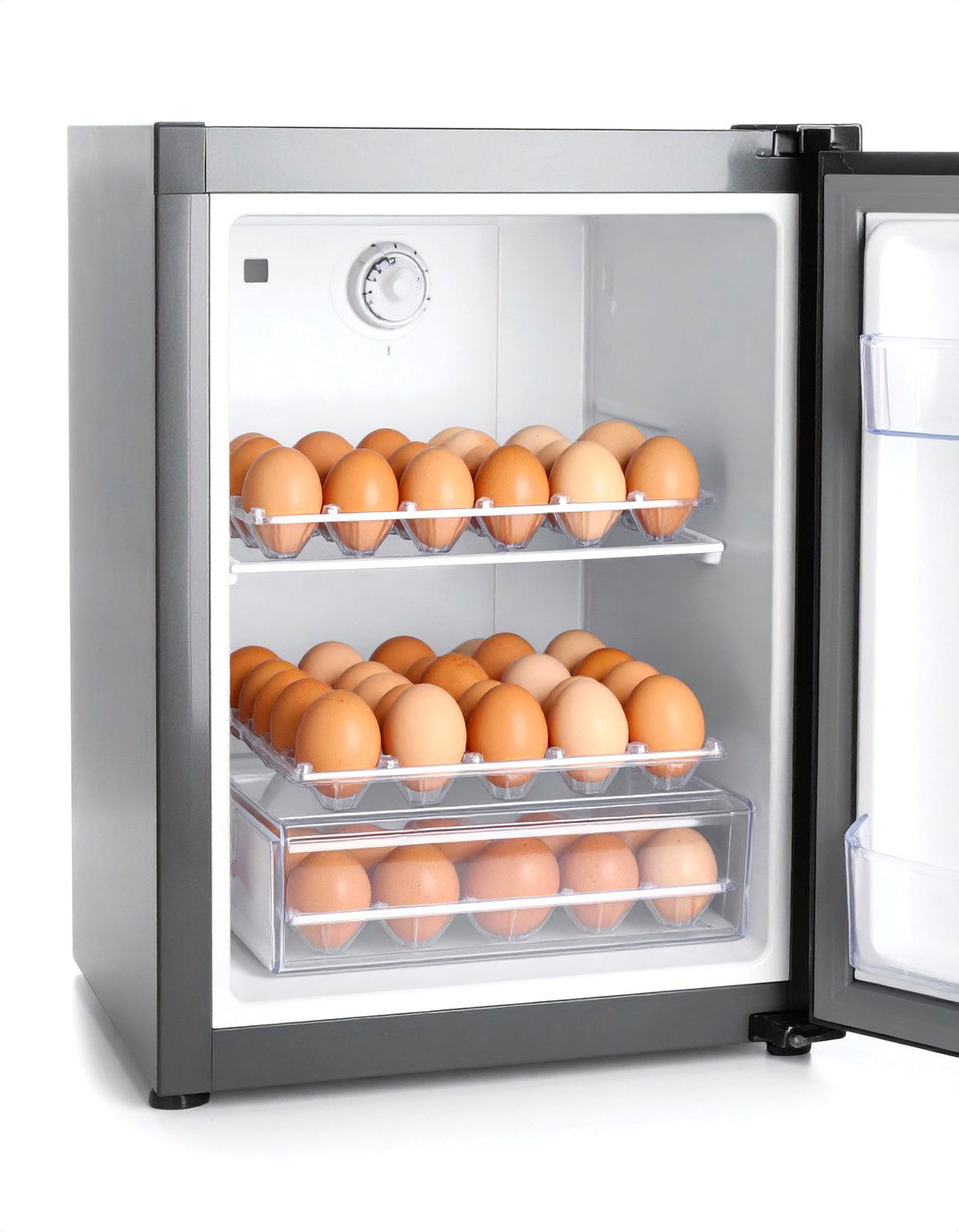
The classic foam carton absorbs moisture and collapses, but a dedicated slide-out egg drawer secures fragile shells while revealing stock at a glance. Clear guides cradle each egg so you can spot cracks immediately and slide the entire tray to the counter for whisking. Reviewers of fridge-organization gear report that switching to a drawer reduced accidental drops by 80 percent during busy breakfast rushes. Pick a model with a date dial on the lid, load older eggs toward the front, and wash the cradle monthly; you’ll never again wonder how many omelets remain for the whole family ever again at once.
15. Practice Fridge First-In, First-Out Rotation

Certainly, the simplest professional kitchen habit is also the most overlooked at home: always shift older fridge items to the front when restocking. Sliding yesterday’s leftovers forward before adding fresh groceries creates a natural timer, ensuring nothing molds behind a milk jug. Food-waste charities note that conscientious FIFO rotation can save an average family up to $1,300 per year in tossed produce and expired dairy. Use felt glide pads under heavy containers so moving them feels effortless, and schedule a 30-second sweep after every shopping trip; consistency, not perfection, is what keeps money out of the trash each month too.
16. Upgrade Crispers with Clear Pull-Out Fridge Produce Drawers
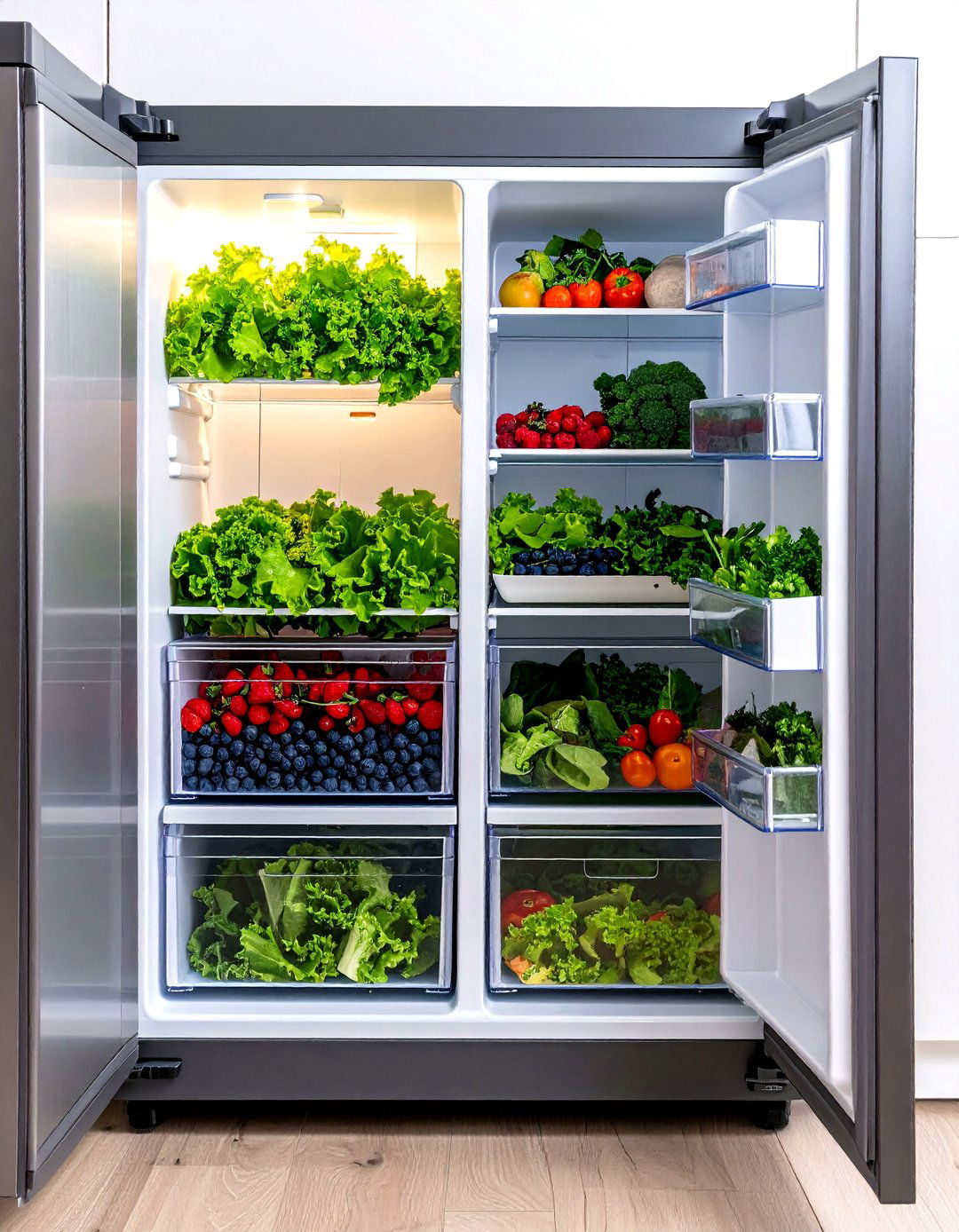
Despite the name, many vegetable drawers become dark graves for wilted spinach. Swapping opaque plastic bins for clear, pull-out produce drawers means you see leafy greens the moment you open the fridge, prompting earlier use. Tests on high-humidity inserts show they extend herb freshness by up to seven days by maintaining balanced airflow and moisture. Keep one drawer set to low humidity for mushrooms and berries, another higher for lettuce, and slide the entire box to the sink when it’s time to rinse. Visibility plus controlled climate equals crisp salads rather than forgotten sludge ever again in there today drawer.
17. Slide Adjustable Fridge Bins to Fit Changing Groceries
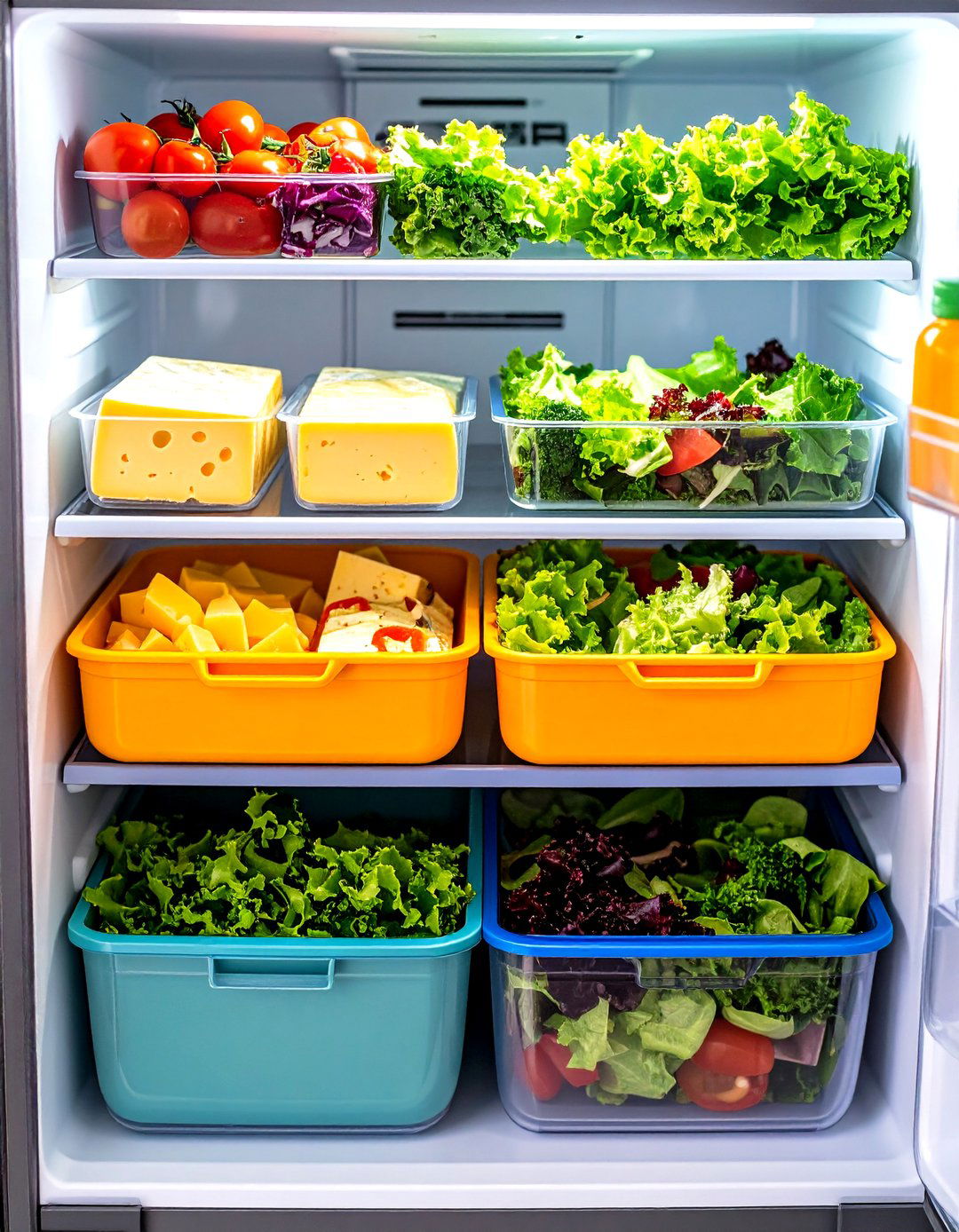
By investing in one adjustable bin with telescoping sides and smooth gliding rails, you turn static fridge shelves into flexible compartments that evolve with your grocery haul. The latest designs let you narrow the chamber for a single cheese log or expand it for a party-size salad bowl without removing the whole organizer. Review labs praised adjustable models for their ergonomic handles and ability to cut re-stacking time almost in half on cleaning day. Place it mid-shelf where the handle is reachable, and relock the sides after every size change so nothing shifts during door swings ever again inside there.
18. Monitor Temperature with a Smart Fridge Sensor
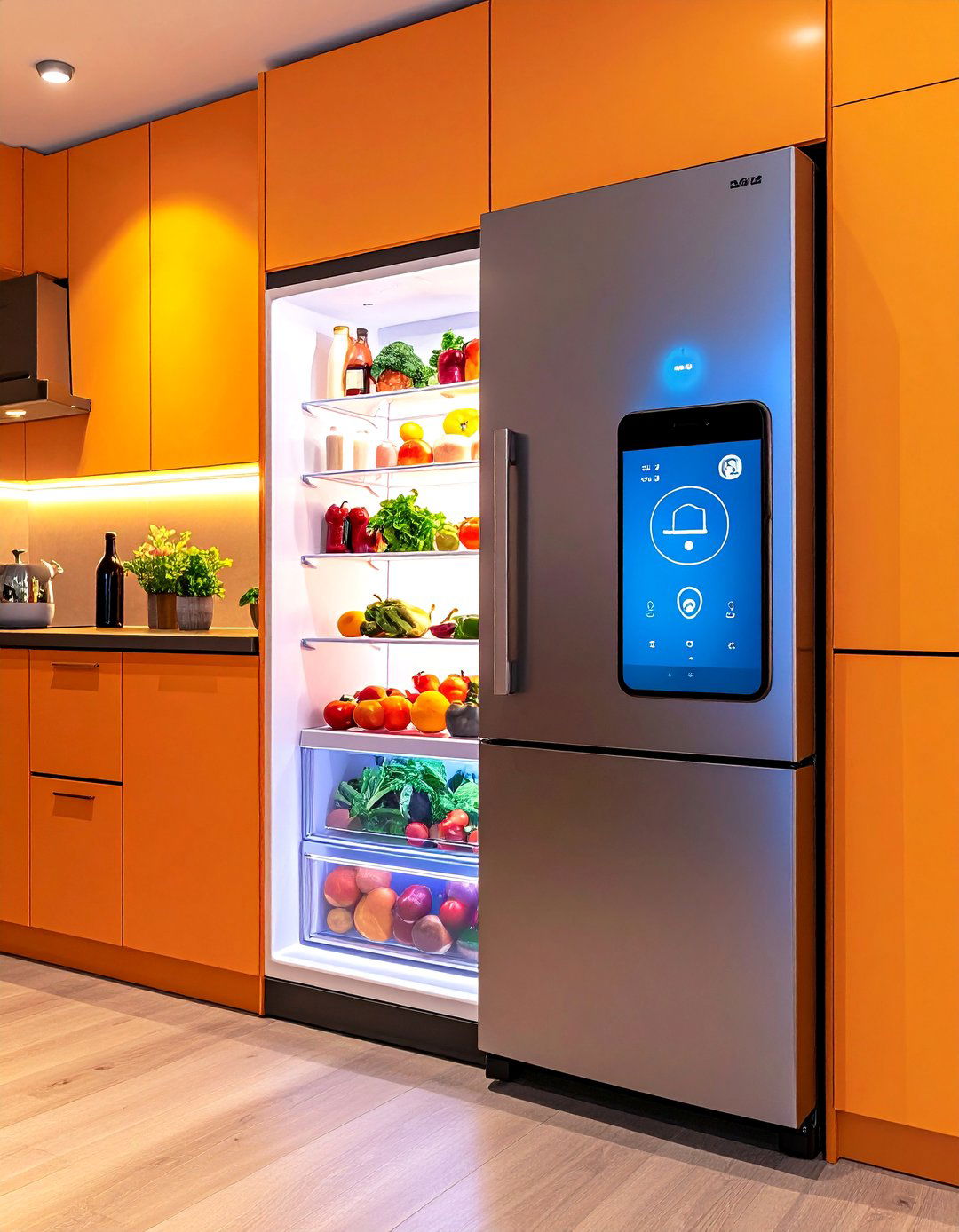
As research into food safety shows, you can catch temperature drifts before milk sours by clipping a palm-size smart sensor on a fridge wall and syncing it to your phone. Modern Wi-Fi thermometers send push alerts if the chill rises above 4 °C, giving you time to close a door left ajar or adjust the dial. Many models log data for months, so you’ll notice patterns that hint at a failing gasket long before a repair bill hits. Position the probe midway up to read the average, replace the battery each season, and share the dashboard with housemates for free alerts.
19. Schedule a Five-Minute Friday Fridge Reset
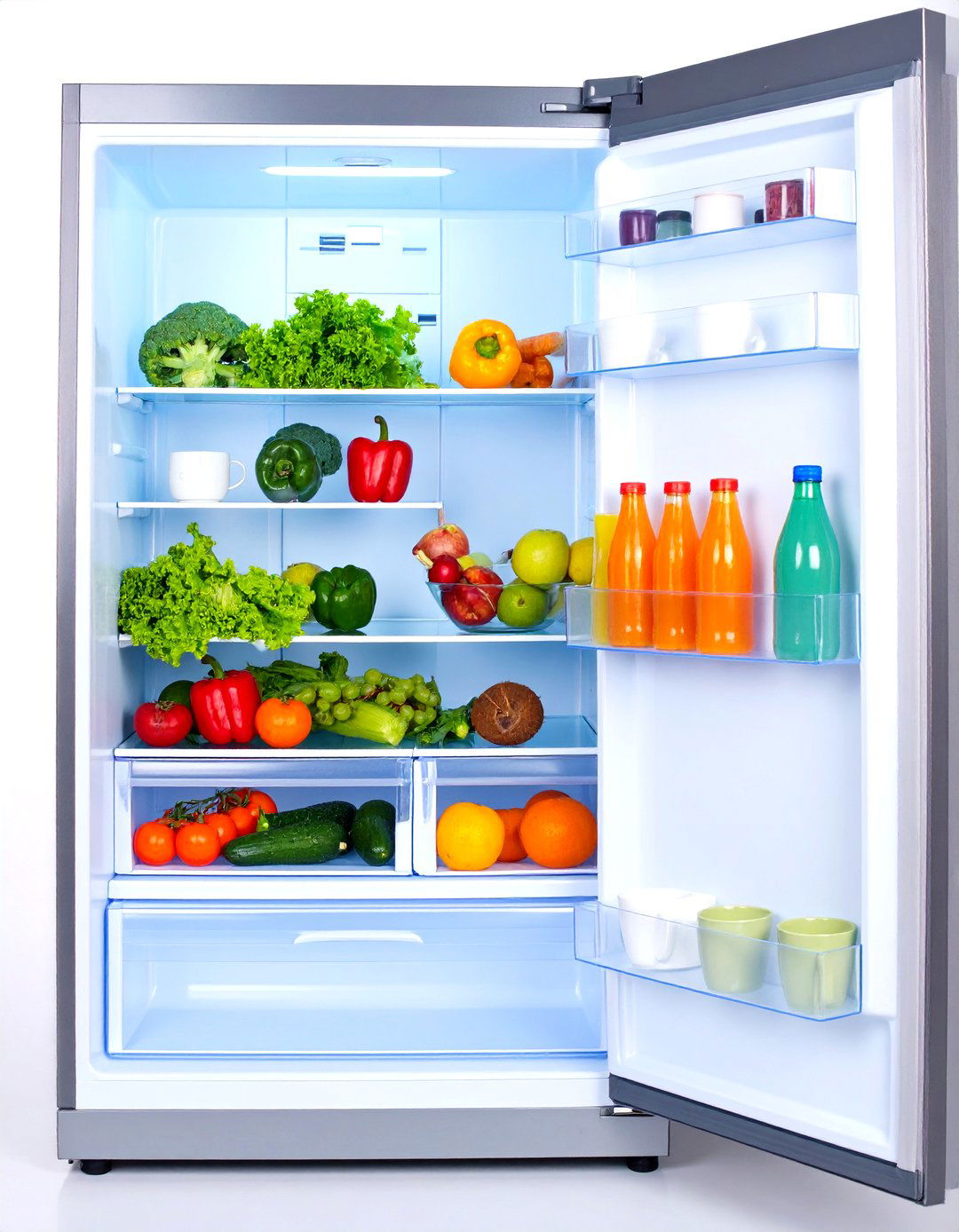
After a draining week, opening a chaotic fridge Saturday morning can derail meal plans, so block five minutes each Friday night for a mini reset. Toss wilted produce, wipe visible spills, and group tomorrow’s breakfast ingredients together. Organization coaches note that consistent micro-maintenance prevents the overwhelming clean-outs that make people abandon systems altogether. Set a phone alarm, play a favorite song, and time yourself; momentum builds when you see progress before the chorus ends. The ritual syncs perfectly with a grocery list review, ensuring you shop mindfully instead of guessing what’s actually gone by Sunday morning every single week ahead.
20. Conduct Seasonal Fridge Deep Declutters for Fresh Starts
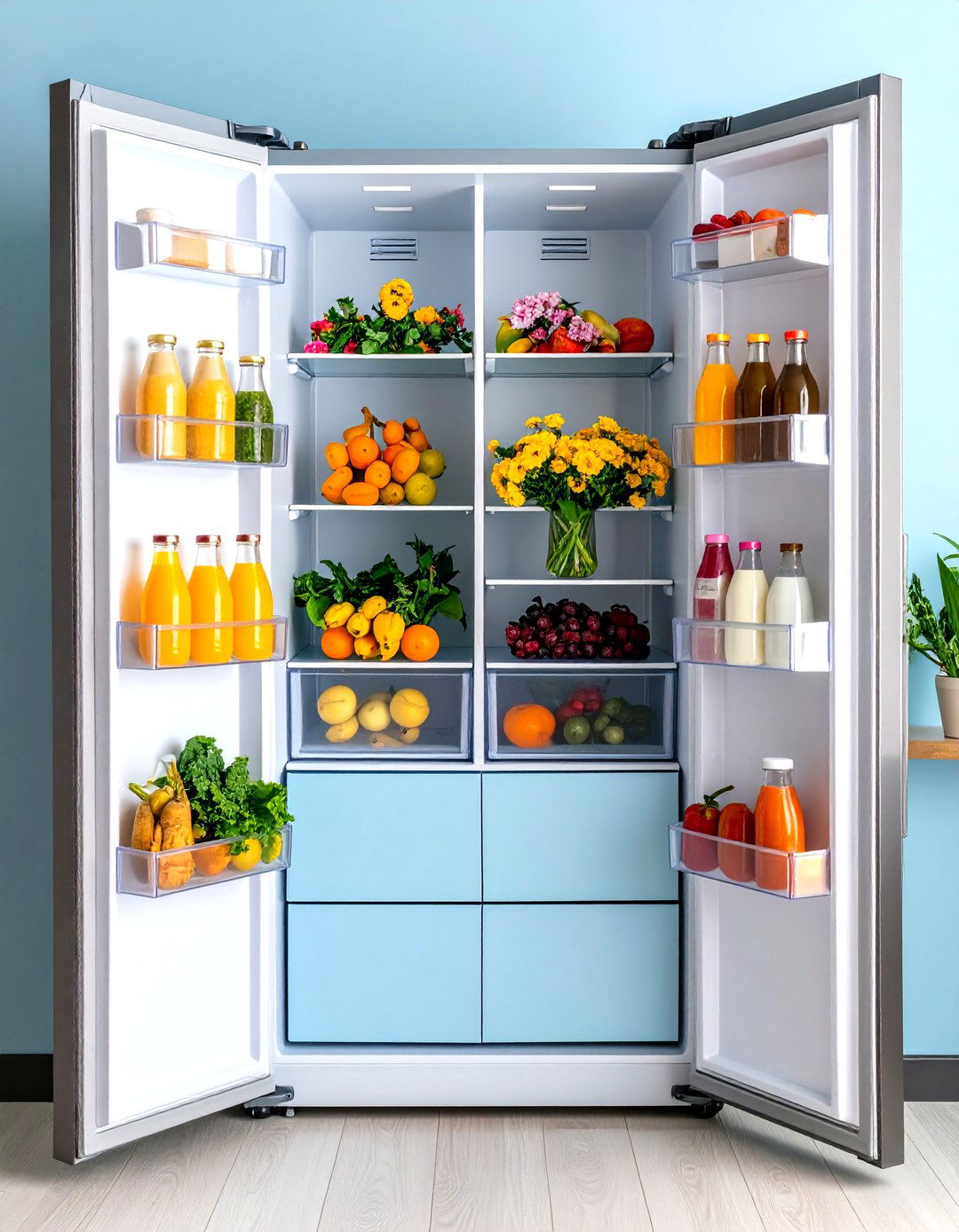
Finally, commit to a quarterly deep clean that empties every shelf, removes drawers, and lets you wipe gaskets before sticky residue breeds odors. Professional organizers filming recent New-Year fridge makeovers say a full reset takes under an hour yet feels like moving into a brand-new appliance. Use the opportunity to check expiration dates, adjust shelf heights for upcoming seasonal produce, and donate unopened items you won’t eat. Spring might call for extra herb space, while autumn invites soup bases. Mark the start of each season on your calendar and reward yourself with a bright bouquet on top of it all.
Conclusion:
An orderly fridge isn’t a luxury; it’s a daily catalyst for saving money, preserving flavor, and cutting household stress. Whether you adopt just a use-first bin or go all in with smart sensors and adjustable drawers, each practice layers clarity onto cold storage, ensuring ingredients stay visible, safe, and ready for easy meals. Remember to pair quick weekly resets with seasonal deep cleans so clutter never sneaks back. When organization becomes routine, those lost leftovers, drippy shelves, and mystery odors fade, leaving a chill box that supports healthy habits and lets you enjoy every bite you bring home.



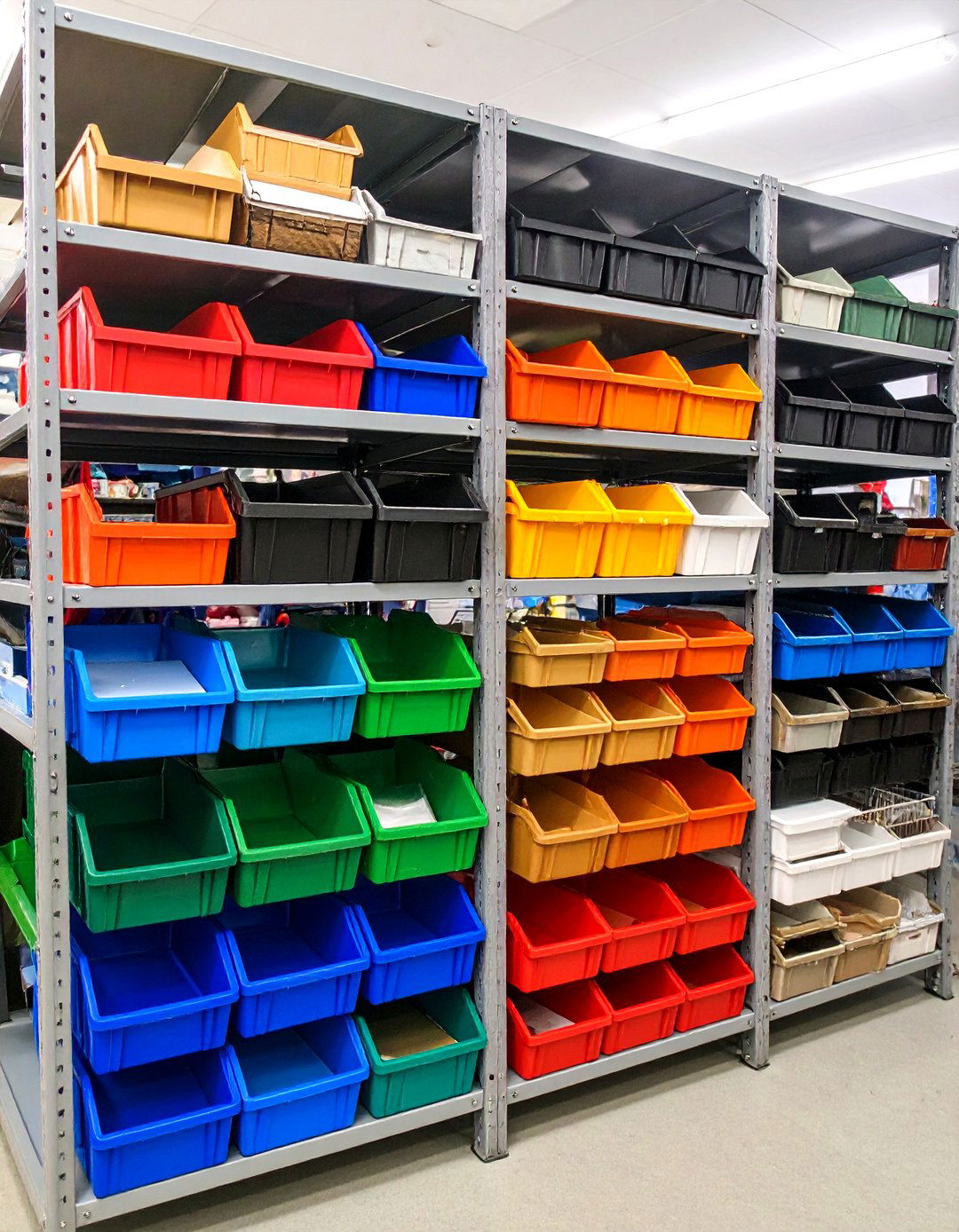



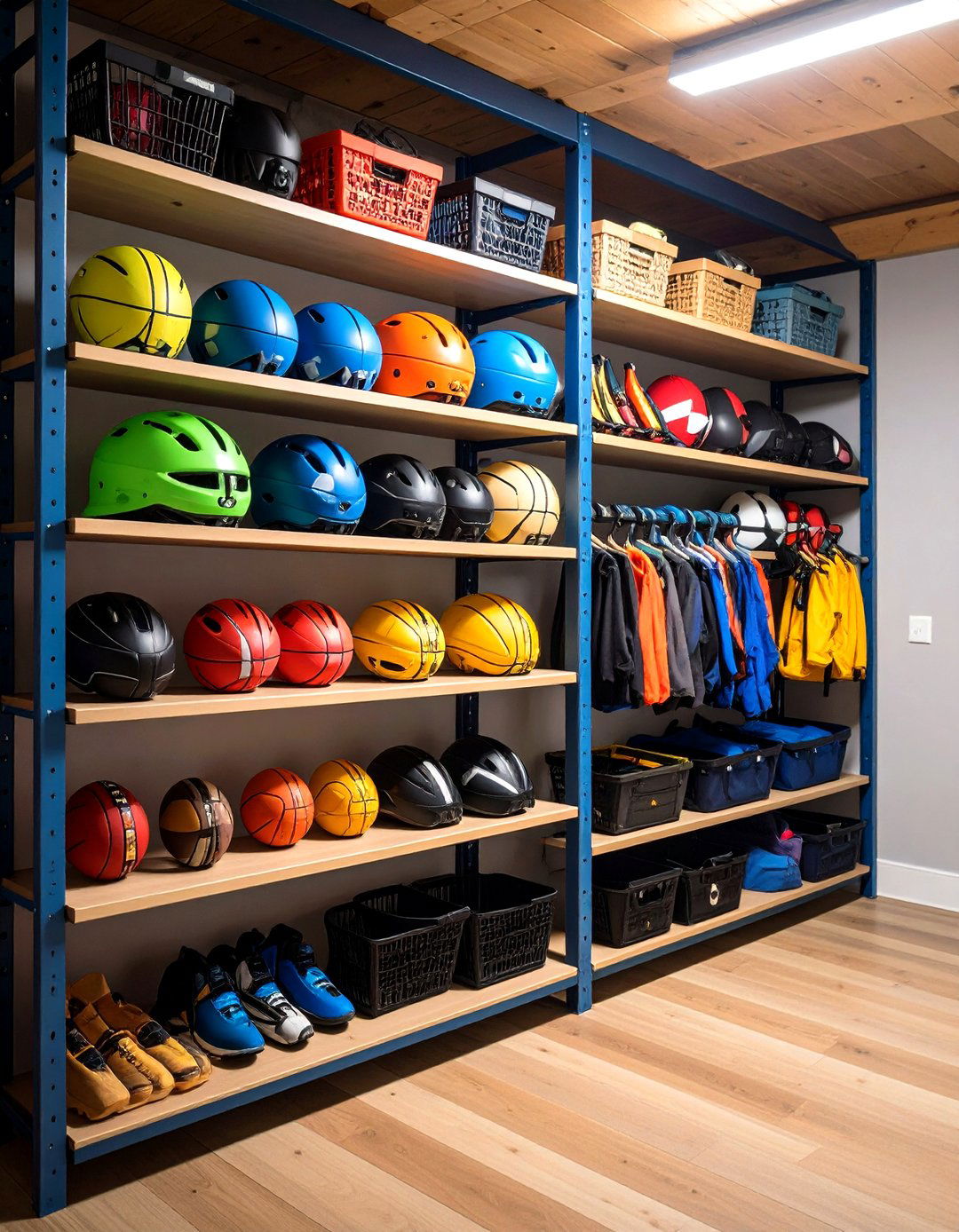




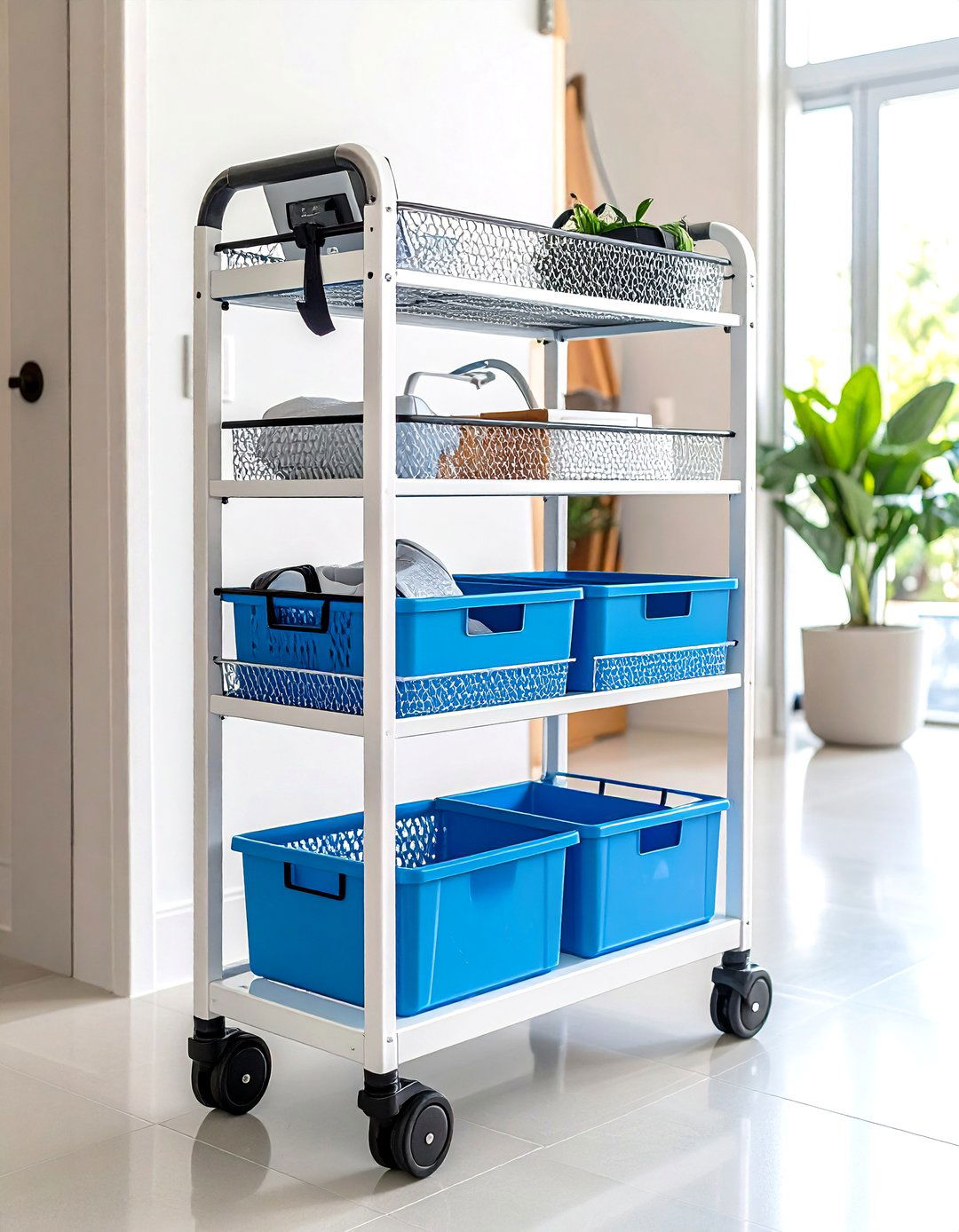

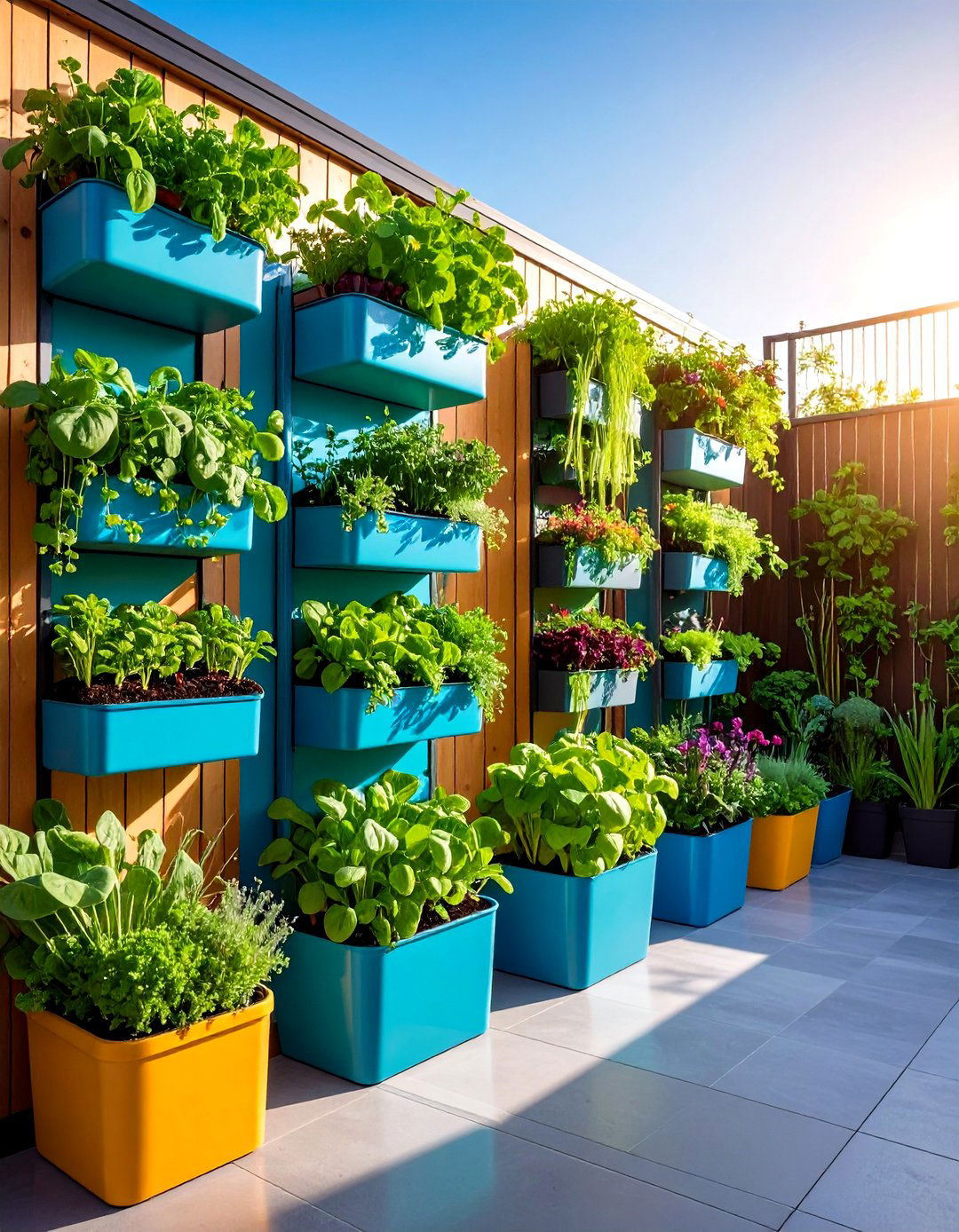

Leave a Reply